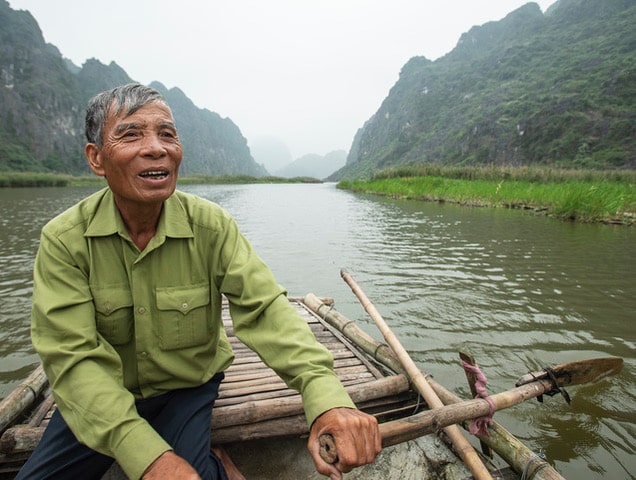Vietnam is rapidly developing – poverty rates have declined dramatically over the years; but with a fast-growing economy comes a thirst for raw materials to support the demands of a middle-class life like new housing, cars, and hotels. This development indirectly threatens the existence of endangered species in this beautiful country.
Vietnam is home to 25 species of primates, but 11 are critically endangered. In terms of the number of species and their level of threat, the country is actually one of the most important ones in the world for primate conservation.
It’s estimated that there are around 250 Delacour’s langurs remaining in the wild and they are only found in Vietnam. This is a primate that was once on the very edge of extinction and whose habitat is still being destroyed at an alarming rate. Delacour’s langur and other primate species are severely threatened by logging, hunting, and limestone quarrying. The products of quarrying are used to produce cement and other aggregates which in turn fuel Vietnam’s rapid commercial development.

Delacour’s langurs high up in their karst limestone habitat ©matthewmaran
Another endangered primate found in the forests of Vietnam is the red-shanked douc langur. It is the most colorful monkey among all species of primates; its distinctive and unique appearance has won it the title “Queen of primates”. In Son Tra, Vietnam, the douc population is approximately 1300 individuals. Habitat loss to support developmental and tourism activities is one of the biggest risks to them. Around 18 tourist resorts were due to be built inside Son Tra with dire consequences but citing the work of several conservation organizations, the government has halted construction and reduced that number significantly. Most of the langur habitat will now be protected.

Red-shanked doug langur in Son Tra ©matthewmaran
The debate between economic development and environmental or biodiversity protection is always a challenge for national leaders. The consequence of economic development on the environment has not yet been clearly measured and these two species are just typical examples.

Nguyen Van Binh, a local boat driver takes tourists to view langurs in the Van Long nature reserve ©matthewmaran
By the conservation efforts of Fauna & Flora International (FFI) and local partners, the situation has improved significantly. The FFI Vietnam Programme is at the forefront of saving the unique and extremely threatened wildlife, much of which is teetering on the verge of global extinction.
There is a huge change from even 10 to 15 years ago. Wild populations have rebounded, the government, young people, corporations, and CEOs are more involved in environment and conservation issues. This gives us hope to keep working!
The following short film created in partnership with Matthew Maran Photography, Fauna & Flora International, and GreenViet – a Vietnamese NGO that focuses on preserving primates in the central region – shines a light on the threats these unique and beautiful species face. Despite the perilous situation for many species, the film carries a hopeful message, drawing on success stories from FFI’s 23 years working in Vietnam. The film features interviews with FFI and GreenViet staff, forest guards, and is narrated by acclaimed British theatre actress, Frances de la Tour.
Link to the movie:
Filmed and produced by award-winning photographer Matthew Maran.
Find out more about FFI’s work in Vietnam here.

